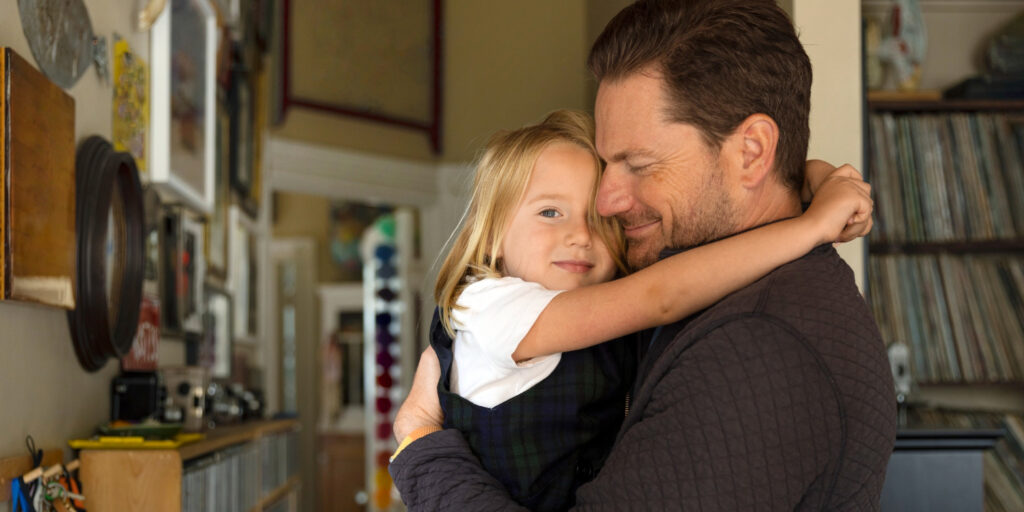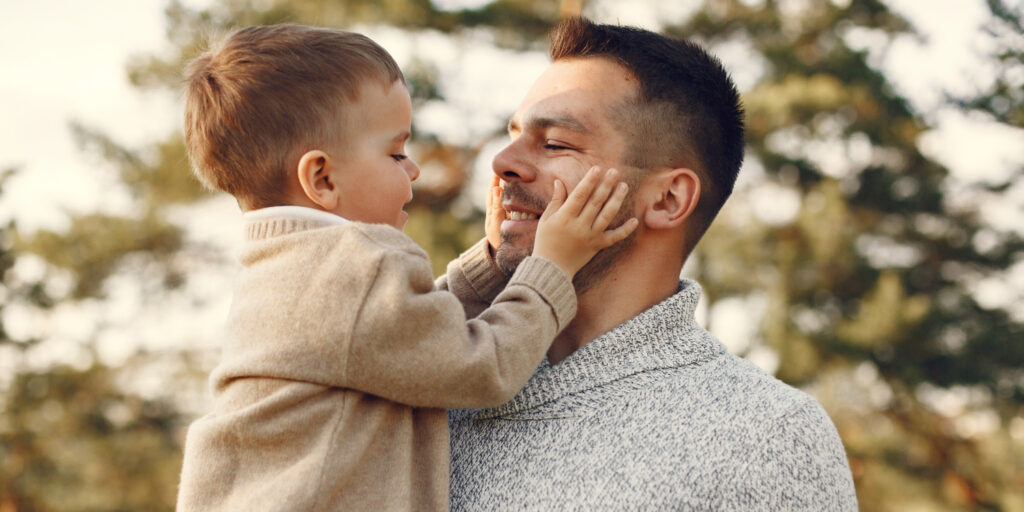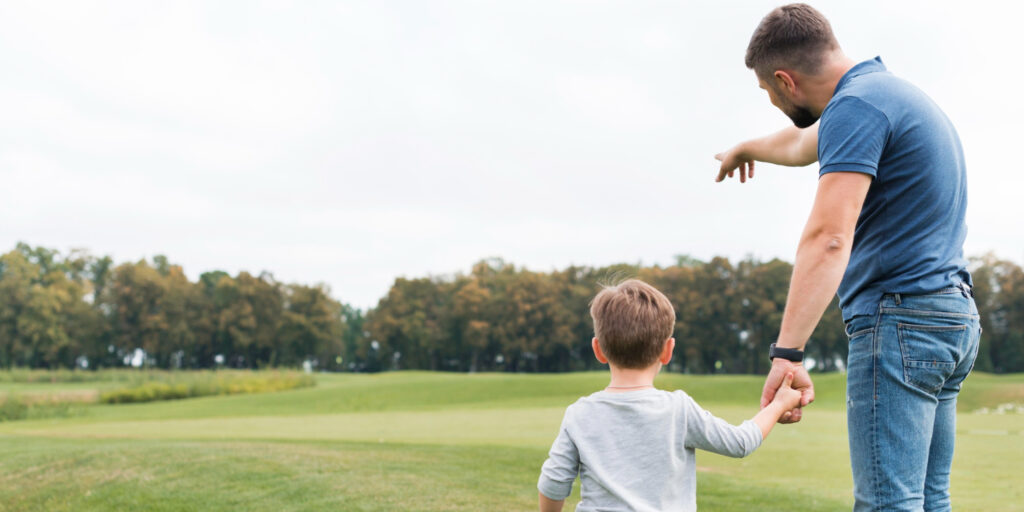Most of us have experienced some form of trauma in our development. We may have endured what mental health professionals refer to as a “big T Trauma” like abuse, serious loss, or a life-threatening experience, or we may have examples of “little t trauma” from events that weren’t life-threatening but caused emotional distress and altered our way of seeing ourselves, other people, and the world.
Childhood trauma of any kind can affect our relationships and our mental and physical health. No matter when the trauma occurred or what shape it took, the importance of making sense of the experience cannot be overstated.

WHAT IS CHILDHOOD TRAUMA?
Childhood trauma refers to experiences that are emotionally or physically harmful and occur during a person’s formative years. These experiences can have lasting effects on a child’s physical, emotional, and psychological well-being, often influencing their development into adulthood. Childhood trauma can take various forms, including:
1. **Physical abuse:** Deliberate use of force causing injury or bodily harm to a child.
2. **Emotional abuse:** Persistent patterns of behaviors such as constant criticism, humiliation, or rejection, which can negatively impact a child’s self-esteem and emotional well-being.
3. **Sexual abuse:** Inappropriate or forced sexual activity or exposure to sexual content.
4. **Neglect:** Failure to provide the necessary care and attention a child needs for healthy development, including basic needs like food, shelter, and emotional support.
5. **Witnessing domestic violence:** Exposure to violence between caregivers or in the home environment.
6. **Loss or separation:** Traumatic experiences such as the death of a parent, separation from parents, or abandonment.
7. **Community violence:** Exposure to violence in the community, such as crime or witnessing violent events.
Childhood trauma can have significant and long-lasting consequences. It may lead to various mental health issues, including anxiety, depression, post-traumatic stress disorder (PTSD), and difficulties in forming healthy relationships. The effects of childhood trauma can also manifest in physical health problems, such as increased risk of chronic diseases.
Early intervention and support are crucial for individuals who have experienced childhood trauma. Therapy, counseling, and supportive environments can help mitigate the impact of trauma and promote healing. It’s important to recognize the signs of childhood trauma and provide appropriate care to help affected individuals lead fulfilling lives.

WHY DOES CHILDHOOD TRAUMA AFFECT SO DEEPLE THE PERSON AS AN ADULT?
Childhood trauma can have profound and lasting effects on a person’s life for several reasons:
1. **Brain development:** The brain undergoes significant development during childhood and adolescence. Trauma during this critical period can interfere with normal brain development, particularly in areas related to emotional regulation, memory, and stress response. These alterations may contribute to long-term emotional and behavioral challenges.
2. **Attachment and relationship difficulties:** Childhood is a time when individuals form attachments to caregivers, which lays the foundation for future relationships. Trauma can disrupt the development of secure attachments, leading to difficulties in forming and maintaining healthy relationships in adulthood.
3. **Coping mechanisms:** Children often develop coping mechanisms to deal with trauma, such as avoidance, dissociation, or self-medicating with substances. These coping strategies may persist into adulthood, even when they are no longer adaptive, and can contribute to maladaptive behaviors or mental health issues.
4. **Self-esteem and identity:** Childhood trauma can negatively impact a person’s self-esteem and self-image. The messages received during traumatic experiences may lead to a distorted sense of self-worth and identity. This can affect decision-making, goal-setting, and overall life satisfaction in adulthood.
5. **Psychological disorders:** Childhood trauma is a significant risk factor for various mental health disorders, including anxiety, depression, post-traumatic stress disorder (PTSD), and borderline personality disorder. These conditions can persist into adulthood and contribute to ongoing challenges.
6. **Physiological impact:** Trauma can lead to changes in the body’s stress response systems, including the hypothalamic-pituitary-adrenal (HPA) axis and the autonomic nervous system. These changes may increase susceptibility to stress-related illnesses and chronic health conditions.
7. **Social and environmental factors:** Childhood trauma can influence a person’s social environment, including educational attainment, employment opportunities, and overall life circumstances. The effects of trauma can create challenges in navigating these aspects of adult life.
8. **Interpersonal difficulties:** Individuals who have experienced childhood trauma may struggle with trust, communication, and emotional intimacy. These challenges can affect both personal and professional relationships, making it difficult to establish and maintain connections with others.
Addressing the impact of childhood trauma often requires therapeutic interventions, support systems, and a comprehensive approach to healing. Early intervention and ongoing support can help individuals cope with the effects of trauma, build resilience, and work towards leading more fulfilling lives as adults.

WHAT ARE THE MAIN CAUSES AND CONSEQUENCES OF CHILDHOOD TRAUMA?
Causes of Childhood Trauma:
1. **Abuse:**
– **Physical Abuse:** Deliberate use of force causing injury or harm.
– **Emotional Abuse:** Persistent patterns of harmful behaviors like criticism or rejection.
– **Sexual Abuse:** Inappropriate or forced sexual activity or exposure.
2. **Neglect:**
– Failure to provide necessary care and attention, including basic needs like food, shelter, and emotional support.
3. **Family Dysfunction:**
– Witnessing domestic violence or living in a household with substance abuse, mental illness, or parental conflict.
4. **Loss or Separation:**
– Experiencing the death of a parent, divorce, or separation from caregivers.
5. **Community Violence:**
– Exposure to violence in the community, such as crime or witnessing violent events.
6. **Natural Disasters:**
– Experiencing traumatic events like earthquakes, floods, or fires.
7. **Medical Trauma:**
– Traumatic experiences related to illness, injury, or medical procedures.
Consequences of Childhood Trauma:
1. **Mental Health Issues:**
– Anxiety disorders
– Depression
– Post-traumatic stress disorder (PTSD)
– Dissociative disorders
2. **Behavioral Issues:**
– Aggression
– Self-harm
– Substance abuse
– Risky behaviors
3. **Cognitive Impacts:**
– Impaired memory and concentration
– Learning difficulties
4. **Social and Relationship Challenges:**
– Difficulty forming and maintaining relationships
– Trust issues
– Social withdrawal
5. **Physical Health Problems:**
– Chronic health conditions
– Weakened immune system
– Increased risk of cardiovascular diseases
6. **Emotional Regulation Difficulties:**
– Difficulty managing emotions
– Mood swings
7. **Identity and Self-Esteem Issues:**
– Distorted self-image
– Low self-esteem
8. **Disrupted Attachment and Relationships:**
– Difficulty establishing secure attachments
– Challenges in forming healthy relationships
9. **Academic and Occupational Challenges:**
– Lower academic achievement
– Employment difficulties
10. **Risk of Revictimization:**
– Increased vulnerability to experiencing further trauma in adulthood.
It’s important to note that the impact of childhood trauma can vary from person to person, and some individuals may demonstrate resilience and coping strategies despite early adverse experiences. Early intervention, therapeutic support, and a nurturing environment can help mitigate the long-term consequences of childhood trauma and promote healing.

WHAT IS THE BEST THERAPY TO OVERCOME CHILDHOOD TRAUMA?
Cognitive-behavioral therapy (CBT) is often considered an effective approach for treating adults who have experienced childhood trauma. CBT focuses on identifying and changing negative thought patterns and behaviors that contribute to psychological distress.
When applied to individuals with a history of trauma, CBT may address various symptoms and challenges associated with the traumatic experiences.
Here are some key components of CBT for individuals with a history of childhood trauma:
1. **Trauma-Informed Approach:**
– CBT should be delivered in a trauma-informed manner, acknowledging and validating the individual’s experiences while prioritizing safety and trust. The therapist should create a safe therapeutic environment.
2. **Psychoeducation:**
– Provide education about the impact of trauma on the brain, emotions, and behavior. Understanding the connection between past trauma and current difficulties is crucial for individuals to make sense of their experiences.
3. **Cognitive Restructuring:**
– Identify and challenge negative thought patterns and beliefs that developed as a result of the trauma. Help the individual replace irrational or harmful thoughts with more adaptive and realistic ones.
4. **Behavioral Techniques:**
– Introduce coping skills and behavioral strategies to manage distressing symptoms. This may include relaxation techniques, grounding exercises, and gradual exposure to trauma-related stimuli in a controlled and supportive manner.
5. **Mindfulness and Relaxation:**
– Teach mindfulness techniques to help individuals stay present in the moment, manage stress, and reduce anxiety. Mindfulness can be a valuable tool for grounding and self-regulation.
6. **Emotion Regulation:**
– Assist in developing healthy ways to identify, express, and regulate emotions. This may involve learning to tolerate and cope with intense emotions without resorting to destructive behaviors.
7. **Interpersonal Skills:**
– Address difficulties in forming and maintaining healthy relationships. Work on improving communication skills, setting boundaries, and understanding attachment patterns.
8. **Narrative Therapy:**
– Encourage the individual to process and make sense of their traumatic experiences by constructing a coherent narrative. This process can promote a sense of mastery and empowerment.
9. **Safety Planning:**
– Develop a safety plan for managing triggers and crises, ensuring the individual has strategies in place for times of increased distress.
10. **Collaborative Goal-Setting:**
– Work collaboratively with the individual to set realistic and achievable goals for therapy. This can help build a sense of agency and accomplishment.
It’s crucial to note that therapy should be individualized, and the pace of progress will vary for each person. Additionally, the therapeutic relationship plays a significant role, and a trusting and supportive alliance between the therapist and the individual is essential for successful trauma recovery. Seeking the assistance of a qualified mental health professional, preferably one with expertise in trauma, is advised for anyone considering CBT for childhood trauma.
Sobre mí
Psicólogo en Valencia | Julio García
¿Buscas ayuda para resolver tus problemas? Puedes contar conmigo. Juntos encontraremos la manera de ayudarte y conseguir los resultados que buscas. Te daré las herramientas que necesitas para volver a ser feliz y disfrutar de la vida, como ya he hecho con cientos de personas como tú.
